Montessori Pink Tower – Sensorial Material for Early Childhood
The Montessori Pink Tower is a classic sensorial material made of ten solid wooden cubes painted in pink, ranging in size from 1x1x1 cm to 10x10x10 cm.
Designed for children ages 3 to 5, this material helps develop visual discrimination of size, coordination, concentration, and fine motor skills.
Children build the tower by stacking the cubes from largest to smallest, learning about dimensions, order, and balance. But in fact, the purpose goes far beyond stacking blocks — it supports a range of developmental goals mentioned below.
What is the Purpose of the Pink Tower in Montessori?
- Visual Discrimination of Size: Children learn to differentiate between sizes as they build the tower from the largest to the smallest cube. This sharpens their ability to observe and compare.
- Fine Motor Development: Handling the ten wooden cubes improves hand-eye coordination and control of movement.
- Preparation for Math: The cubes differ in all three dimensions by 1 cm increments (from 1 cm³ to 10 cm³). This indirect experience with dimension and scale lays the groundwork for understanding concepts like volume, squares, and cubes later in math.
- Preparation for Handwriting: When a child picks up the smallest cubes, they naturally use a three-finger grip — the same fingers used for holding a pencil.
- Concentration and Order: The Pink Tower requires attention, sequencing, and patience — all key components in building concentration and a sense of internal order.
- Language Enrichment: Montessori teachers introduce vocabulary like “large,” “larger,” “largest,” “small,” “smaller,” “smallest,” helping with language development through concrete experience.
- Aesthetic Appreciation: The uniform color (pink) removes distraction from color and emphasizes form and size. Children also take pride in the beauty and precision of their completed tower.
Why is the Montessori Pink Tower Pink?
Maria Montessori was closely observing children as they explored different materials. She experimented with towers of various colors, but noticed that children were naturally drawn to the pink one. It stood out as the most inviting and beautiful in their eyes.
That’s why Dr. Maria Montessori chose to keep the entire tower pink — to match the child’s sense of beauty and spark interest! The single color also helps children concentrate. With no color distractions, they can focus entirely on the size of each cube. If one is out of order, it’s easy to spot.
What is the Pink Tower Exercise in Montessori?
We’ve created a series of video presentations about the Pink Tower — you can watch them below. Or visit our YouTube channel to explore many more Montessori materials in action.
How to Introduce the Pink Tower – Full Presentation Guide
Description of Materials:
- Floor mat
- Ten solid wooden pink cubes differing in length, width, and height
Presentation 1 (Video 1): Watch on YouTube
Ask the child to place a mat on the floor. Invite the child to where the Pink Tower is kept and demonstrate how to grasp each cube with one hand and support it with the other while carrying it to the mat. The child helps carry the cubes individually and places them at random on the mat.
Exercise 1 (Video 2): Watch on YouTube
Beginning with the largest cube, and with one movement place the cubes concentrically in tower formation. View the tower from all around, pause, and gently dismantle it.
The child builds the tower and dismantles it. He may need to stand to place the last four or five cubes. He replaces the cubes on the stand or shelf with assistance.
Presentation & Exercise 2 (Video 3): Watch on YouTube
Build the tower aligning two sides. Use the smallest cube as a unit of measure to demonstrate the relation between any two consecutive cubes.
In this advanced Pink Tower presentation, the smallest cube (1x1x1 cm) is used as a concrete unit of measurement. The child carefully slides this cube along every edge of each larger cube — height, width, and depth — to check for precise alignment and dimension.
Why this lesson matters? The child isn’t just checking alignment — he/she is physically and mentally engaging in a sensorial exploration of size, scale, and growth. This bridges the gap between physical manipulation and abstract mathematical thinking, preparing the child for future concepts in arithmetic and geometry.
Watch it on our YouTube channel: Montessori Pink Tower – Presentation 2: Aligning & Measuring with the Smallest Cube @ E&O Montessori
A Sensorial Experience with Deep Mathematical Meaning
This activity is not just visual — it is a sensorial experience that engages the child’s sense of touch, movement, and sight. Through the repeated motion of aligning and measuring, the child internalizes physical dimensions in a meaningful, hands-on way.
By using the 1 cm³ cube as a measuring tool, the child:
- Discovers that each cube increases by exactly 1 cm in all directions
- Experiences volume growth in three dimensions through movement
- Gains an intuitive grasp of measurement and proportion
- Builds understanding of non-standard units before formal math instruction
Indirect Preparation for Mathematics
- Early understanding of cubic numbers (e.g., 2³ = 8, 3³ = 27)
- Foundations of the decimal system (10 cubes from 1 cm to 10 cm)
- Concrete introduction to geometry, alignment, and unit comparison
- Preparation for multiplication, powers of numbers, and place value
Control of Error
- Visual disharmony
- The tower will topple over if badly built
Purpose
Direct:
- Visual and muscular perception of dimension
- Coordination of movement
Indirect:
- Preparation for mathematics
- Ten cubes – ten is the base for the decimal system
- Cube root – one thousand of the smallest cube makes the tenth cube
Language (at a later stage):
- Cube, large and small, comparatives and superlatives
What is the Pink Tower? (Product Summary)
The whole set includes 10 cubes + 1 spare smallest cube (1x1x1 cm). Crafted from durable hardwood and painted with non-toxic paint.
Ideal for Montessori classrooms and homeschool environments.
Key Features:
- Develops size perception and sequencing
- Encourages independent problem solving
- Control of error is visual
- AMI-aligned sensorial material
Ages: 3–5
Explore more Sensorial Montessori Materials to support your child's early development.

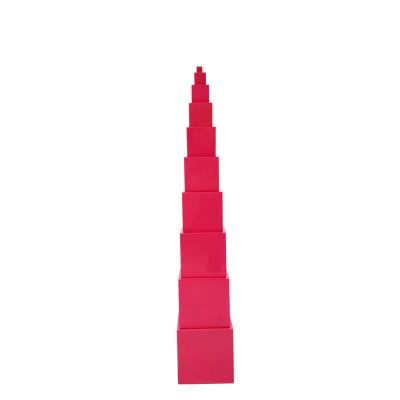


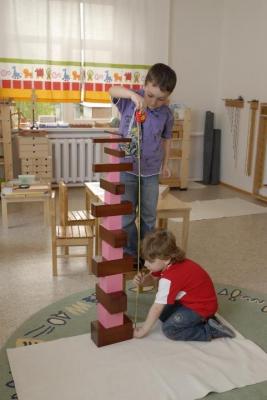
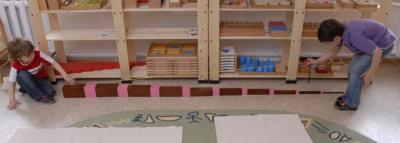







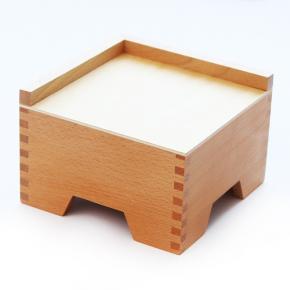
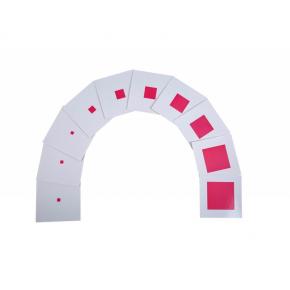
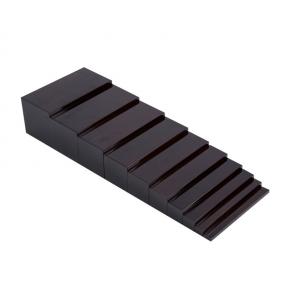
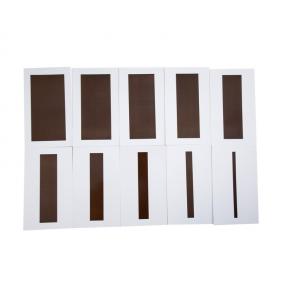
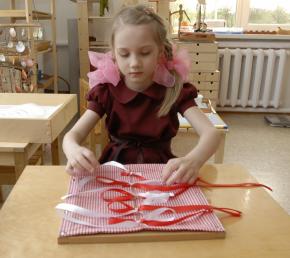
Reviews for Pink Tower